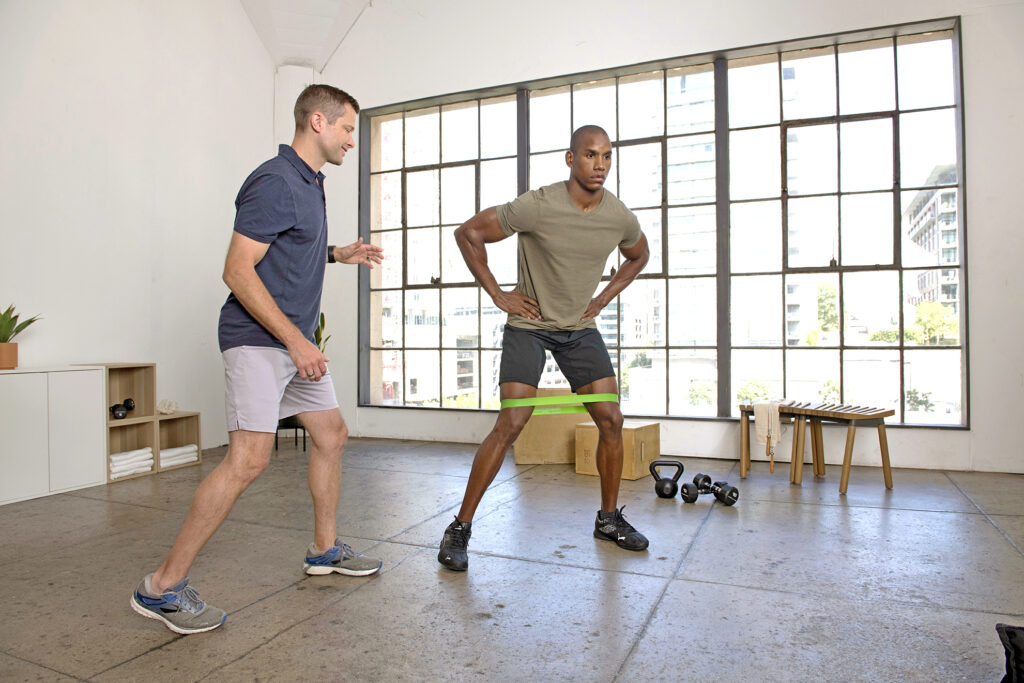Fitness Coaching in Nursing Homes: Tips and Best Practices

- All of our content is written by humans, not robots. Learn More
Older adults need to stay active to maintain their mobility, strength, and overall well-being. A dedicated fitness class can be the perfect solution to help nursing home residents socialize, stay fit, and have fun. As a fitness coach, these clients will differ from your usual ones. You’ll need to know how to develop the safest workout that caters to a more limited range of mobility and strength without sacrificing effectiveness. Where do you start?
Table of Contents
Toggle
Collaborate and Create Individual Assessments
While all of your coaching will likely be conducted in a group setting, you’ll see a wide variety of clients. Some individuals may use a wheelchair at all times, while others retain full mobility. Each resident will require a careful individual assessment of their physical aptitude and specific workout goals. You’ll want to work in tandem with physical therapists and nursing home staff to ensure each client has a safe and practical routine to follow that does not compromise their health and well-being. You will need to take limitations, medications, previous injuries, and current health into account when creating a plan at all times.
Focus on Maintaining Independence
Unlike typical clients who seek more prominent weight loss or muscle growth, nursing home workouts tend to focus on maintaining independence, good heart health, and mobility. Routines will not be rigorous or demanding. Choose exercises that promote balance, flexibility, coordination, and general mobility. Stretches, toe touches, and chair squats can serve as a good starting point for those who aren’t in wheelchairs. Swimming aerobics can work excellently as well. Allowing nursing home clients to practice everyday mobility tasks can form a beneficial routine, such as reaching overhead, walking, and getting up from a seated position.
Include Social Activities
Socialization is very important for older adults. They may not have every opportunity to form new friendships or have lengthy conversations with peers. A fun fitness event can attract a larger crowd, which is perfect for seniors to socialize. You can incorporate engaging social activities in your routine by hosting group classes, adding themes, using music, and rewarding achievable milestones. You can encourage friendly competition and simple partner workouts to promote interaction and strengthen social bonds. Socializing with residents yourself also counts as good practice and enrichment for them.
Make the Routine Low Pressure
While your coaching routines should be fun and exciting, you don’t want to pressure residents to injure themselves or get too tired. They’ll need to conserve energy for the rest of their daily schedule, and overexertion can be dangerous for many residents. You don’t want to become a drill sergeant. Check in with your clients frequently and ensure they’re not hiding signs of fatigue or pushing themselves too hard. Incorporate frequent breaks and gradually increase the duration of sessions over time.
Vary Equipment and Accessibility Requirements
As noted previously, nursing home residents will vary in mobility and health. Certain equipment or workouts may not be accessible to everyone. Vary the type of workouts involved to include everyone. Not all clients will be able to walk for cardio, but pedal bikes or arm cycling can help others achieve similar effects. You can do strength training with wrist or leg weights, which are suitable for a wider range of people, rather than requiring clients to grip a barbell. Get to know the needs of your clients and develop a routine that works for everyone, even if you need to make substitutions.
Prioritize Safety and Well-Being
A nursing home fitness routine should always prioritize safety over results. Take precautions to ensure any health or safety issues aren’t present before, during, and after the routine. Ensure the area is free from trip or fall hazards. If any client appears to struggle or looks excessively fatigued, you may want to slow down or initiate a break. While most nursing homes will supervise and provide excellent care for residents, always note if you witness abuse or neglect. You may need to serve as a witness or point of contact for a resident filing an abuse report with the police or a lawsuit.
Certain popular retirement areas or larger cities are more likely to see cases of neglect or abuse in nursing homes. Champaign, Illinois, has a nursing home rated significantly below average. Several residents there have needed a Champaign nursing home abuse lawyer, and you may be involved if you have witnessed or even contributed to a resident’s harm. Tampa, Florida, has also recently come under scrutiny for its insufficient staffing and delayed emergency response times. These locations are some of the many that are popular retiree destinations, so you must stay vigilant to protect residents when you’re doing fitness work. Pay attention if residents are ignored, mocked, belittled, pushed around, or hurt.
Fitness coaching for nursing home residents will require you to shift your priorities to promote independence, mobility, safety, enjoyment, and social interaction. Unlike other clients, you don’t want to push them past their thresholds or encourage fatigue. You’ll need to coordinate with the clients’ nursing home staff and physical therapists to promote a safe and healthy routine that works best for each individual. When in doubt, always err on the side of caution and take frequent breaks. Always prioritize the safety of your clients; if you see something, speak up.



